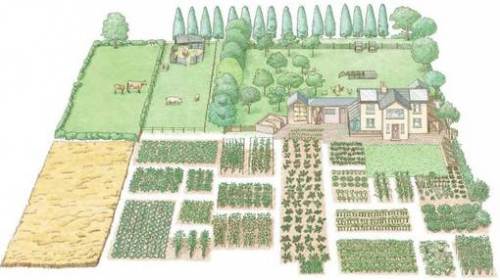
John Seymour (12 June 1914 – 14 September 2004) was an prolific early author in the self-sufficiency movement. He had multiple roles: he was a writer, broadcaster, environmentalist, agrarian, smallholder and activist; a rebel against: consumerism, industrialisation, genetically modified organisms, cities, motor cars; an advocate for: self-reliance, personal responsibility, self-sufficiency, conviviality (food, drink, dancing and singing), gardening, caring for the Earth and for the soil.
Seymour was born in London, England; his father died when he was very young, his mother remarried and the family moved to the fashionable seaside town of Frinton-on-Sea in north-east Essex. It was however surrounded by agricultural land, and the life led by those on the land and in small boats laid a foundation for his later vision of a simple cottage economy with farming and fishing providing the essentials of life.

After schooling in England and Switzerland, he studied agriculture at Wye College, at that time a school of the University of London. In 1934, at the age of 20, he went to Southern Africa where he held a succession of jobs: a farmhand and then manager of a sheep farm, a deckhand and skipper of a fishing boat operating from Namibia (then South-West Africa), a copper mine worker in Zambia (then Northern Rhodesia), and a worker for the government veterinary service. Whilst in Africa he spent some time with bushmen where he gained friendship and an insight into the life of hunter gatherers.

1939 to 1951
At the start of World War II in 1939, Seymour travelled to Kenya where he enlisted in the Kenya Regiment and was posted to the King's African Rifles. He fought against Italian troops in the Abyssinian Campaign in Ethiopia. The regiment was then posted to Sri Lanka (then the British colony Ceylon) and afterwards to Burma, where allied forces were fighting against Japan. For Seymour the war ended on a low note; he expressed his disgust when the Allies used fission bombs on Hiroshima and Nagasaki.
On arrival in Britain after the war Seymour worked for a while on a Thames sailing barge, a traditional craft still operating around the south and east coasts of England, where he picked up the folk songs of a disappearing occupation. After working as a labour officer for the Agricultural Committee finding agricultural work for German prisoners of war who still not returned home in 1950, he created a series of short programmes on the BBC Home Service (now Radio 4). He then travelled overland to India for the BBC, gaining experience of the Subsistence agriculture still common in eastern Europe and Asia. His experiences on the journey led to his first book, The Hard Way to India, published in 1951.

The Smallholdings
Seymour was living aboard a Dutch sailing smack when he married Sally Medworth, an Australian potter and artist in 1954. In this they travelled around the waterways and rivers of England and Holland, journeys later described in Sailing through England. As their first daughter grew older they felt that a land-base would be more suitable. They leased two isolated cottages on 5 acres (2.0 ha) of land near Orford in Suffolk. The manner in which they developed self-sufficiency on this smallholding is recounted in The Fat of the Land (1961). At the end of the 1960s, Seymour, along with other radical voices like Herbert Read, Edward Goldsmith and Fritz Schumacher, provided a stream of articles for the journal Resurgence edited from 1966–1970 by John Papworth.

In 1964 the family moved to a farm near Newport, Pembrokeshire. The 1970s saw Seymour's publication rate reach a maximum. In 1976 The Complete Book of Self-Sufficiency was published, a guide for real and dreaming downshifters. Appearing shortly after the publication of Schumacher's Small is Beautiful - a study of economics as if people mattered (1973) and The Good Life's first showing on British television (1975), the sales of the book exceeded all expectations. It was also set to establish the reputation of two young publishers, Christopher Dorling and Peter Kindersley who had commissioned and edited the work. In addition to self-sufficiency: he wrote four guide books in the Companion Guide series.

In the 1970s and 1980s he also made television programmes: an early series followed the footsteps of George Borrow's Wild Wales (1862), later he spent three years making the BBC series Far From Paradise (with Herbert Girardet) which examined the history of human impact on the environment.
His farm in Wales welcomed visitors seeking guidance on the smallholders life, a project which continued when he moved to County Wexford in Ireland during the 1980s. Here in 1999 he was taken to court for damaging a crop of GM sugar beet. For the last years of his life, he lived on his old Pembrokeshire farm with his daughter's family. He died there on 14 September 2004 and was buried in the top field in an orchard that he had planted.

Legacy
His obituary in the Guardian said:
John was as much at home in the humblest house on a hillside, as in the manor house of landed gentry. He was like a force of nature, always willing to listen, always interested in learning about new - or very old - ways of working the land. He was a one-man rebellion against modernism ... Herbert Girardet, 2005.[1]

ไม่มีความคิดเห็น:
แสดงความคิดเห็น